-
Executive summary
-
Market Introduction
-
Definition
- Research Objective
- Assumptions
-
2.2.
-
Scope of the Study
-
2.2.3.
-
Limitations
-
Research Methodology
-
Overview
-
Data Mining
-
Secondary Research
-
Primary Research
- Primary Interviews
- Breakdown of Primary Respondents
-
and Information Gathering Process
-
Forecasting Model
-
Market Size Estimation
- Bottom-Up
- Top-Down Approach
-
Approach
-
Data Triangulation
-
Validation
-
Market Dynamics
-
Overview
-
Drivers
-
Restraints
-
Opportunities
-
Market Factor Analysis
-
Value Chain Analysis
-
Porter’s Five Forces Analysis
- Bargaining Power of Suppliers
- Bargaining Power of Buyers
- Threat of New Entrants
- Intensity of Rivalry
-
5.2.4.
-
Threat of Substitutes
-
COVID-19 Impact
- Market Impact Analysis
- Regional Impact
-
Analysis
-
5.3.3.
-
Opportunity and Threat Analysis
-
GLOBAL COLLATION SHRINK FILMS MARKET, BY
-
Material
-
Overview
-
LCPE
-
LLDPE
-
MDPE
-
6.5.
-
HDPE
-
PP
-
Others
-
GLOBAL COLLATION SHRINK FILMS MARKET,
-
Application
-
Overview
-
Bottles
-
Cans
-
Books
-
& Magazines
-
Cartons
-
Others
-
GLOBAL COLLATION SHRINK
-
FILMS MARKET, End Use
-
Overview
-
Food & Beverages
-
8.3.
-
Cosmetics
-
Personal Care & Home Care
-
Transport & Logistics
-
Pharmaceuticals
-
Printing & Publications
-
Others
-
GLOBAL COLLATION SHRINK FILMS MARKET, by Region
-
Overview
- US
- Canada
-
9.1.
-
North America
-
Europe
- Germany
- France
- UK
- Italy
- Spain
- Rest
-
of Europe
-
Asia-Pacific
- China
- India
- South Korea
- Australia
- Rest of Asia-Pacific
-
9.3.3.
-
Japan
-
Rest of the World
- Middle East
- Africa
-
9.4.3.
-
Latin America
-
Competitive Landscape
-
Overview
-
Competitive
-
Analysis
-
Market Share Analysis
-
Major Growth Strategy in the
-
Global Collation Shrink Films Market,
-
Competitive Benchmarking
-
10.6.
-
Leading Players in Terms of Number of Developments in the Global Collation Shrink
-
Films Market,
-
Key developments and Growth Strategies
- New
- Merger & Acquisitions
-
Product Launch/Service Deployment
-
10.7.3.
-
Joint Ventures
-
Major Players Financial Matrix
- Sales &
- Major Players R&D Expenditure. 2022
-
Operating Income, 2022
-
11.
-
Company ProfileS
-
Scientex
- Company Overview
- Products Offered
- Key Developments
- SWOT Analysis
- Key Strategies
-
11.1.2.
-
Financial Overview
-
MURAPLAST d.o.o.
- Company Overview
- Financial Overview
- Products
- Key Developments
- SWOT Analysis
- Key
-
Offered
-
Strategies
-
ITP - Industria Termoplastica Pavese
- Company
- Financial Overview
- Products Offered
- SWOT Analysis
- Key Strategies
- Company Overview
- Financial Overview
- Key Developments
- SWOT Analysis
-
Overview
-
11.3.4.
-
Key Developments
-
11.4.
-
SABIC
-
11.4.3.
-
Products Offered
-
11.4.6.
-
Key Strategies
-
Coveris Holdings SA
- Company Overview
- Products Offered
- Key Developments
- SWOT Analysis
- Key Strategies
-
11.5.2.
-
Financial Overview
-
TILAK POLYPACK PVT.
- Company Overview
- Financial Overview
- Products
- Key Developments
- SWOT Analysis
- Key
-
LTD
-
Offered
-
Strategies
-
Polystar Plastics Ltd
- Company Overview
- Products Offered
- Key Developments
- SWOT Analysis
- Key Strategies
-
11.7.2.
-
Financial Overview
-
Polipaks Ltd.
- Company Overview
- Financial Overview
- Products
- Key Developments
- SWOT Analysis
- Key
-
Offered
-
Strategies
-
PLASTOTECNICA SPA
- Company Overview
- Products Offered
- Key Developments
- SWOT Analysis
- Key Strategies
-
11.9.2.
-
Financial Overview
-
Silvalac SA
- Financial Overview
- Products Offered
- Key Developments
- SWOT Analysis
- Key Strategies
-
11.10.1.
-
Company Overview
-
Appendix
-
References
-
Related Reports
-
LIST
-
OF TABLES
-
Global Collation Shrink Films Market, Synopsis, 2018-2032
-
Global Collation Shrink Films Market, Estimates & Forecast, 2018-2032
-
(USD BILLION)
-
GLOBAL COLLATION SHRINK FILMS MARKET, BY Material, 2018-2032
-
(USD BILLION)
-
GLOBAL COLLATION SHRINK FILMS MARKET, Application, 2018-2032
-
(USD BILLION)
-
GLOBAL COLLATION SHRINK FILMS MARKET, End Use, 2018-2032
-
(USD BILLION)
-
North America: COLLATION SHRINK FILMS MARKET, BY Material,
-
North America: COLLATION SHRINK FILMS MARKET,
-
Application, 2018-2032 (USD BILLION)
-
North America: COLLATION SHRINK
-
FILMS MARKET, End Use, 2018-2032 (USD BILLION)
-
US: COLLATION SHRINK
-
FILMS MARKET, BY Material, 2018-2032 (USD BILLION)
-
US: COLLATION SHRINK
-
FILMS MARKET, Application, 2018-2032 (USD BILLION)
-
US: COLLATION SHRINK
-
FILMS MARKET, End Use, 2018-2032 (USD BILLION)
-
Canada: COLLATION SHRINK
-
FILMS MARKET, BY Material, 2018-2032 (USD BILLION)
-
Canada: COLLATION
-
SHRINK FILMS MARKET, Application, 2018-2032 (USD BILLION)
-
Canada:
-
COLLATION SHRINK FILMS MARKET, End Use, 2018-2032 (USD BILLION)
-
Europe:
-
COLLATION SHRINK FILMS MARKET, BY Material, 2018-2032 (USD BILLION)
-
TABLE 2
-
Europe: COLLATION SHRINK FILMS MARKET, Application, 2018-2032 (USD BILLION)
-
TABLE
-
Europe: COLLATION SHRINK FILMS MARKET, End Use, 2018-2032 (USD BILLION)
-
TABLE
-
germany: COLLATION SHRINK FILMS MARKET, BY Material, 2018-2032 (USD BILLION)
-
germany: COLLATION SHRINK FILMS MARKET, Application, 2018-2032 (USD BILLION)
-
germany: COLLATION SHRINK FILMS MARKET, End Use, 2018-2032 (USD BILLION)
-
FRANCE: COLLATION SHRINK FILMS MARKET, BY Material, 2018-2032 (USD BILLION)
-
FRANCE: COLLATION SHRINK FILMS MARKET, Application, 2018-2032 (USD BILLION)
-
FRANCE: COLLATION SHRINK FILMS MARKET, End Use, 2018-2032 (USD BILLION)
-
italy: COLLATION SHRINK FILMS MARKET, BY Material, 2018-2032 (USD BILLION)
-
italy: COLLATION SHRINK FILMS MARKET, Application, 2018-2032 (USD BILLION)
-
italy: COLLATION SHRINK FILMS MARKET, End Use, 2018-2032 (USD BILLION)
-
spain: COLLATION SHRINK FILMS MARKET, BY Material, 2018-2032 (USD BILLION)
-
spain: COLLATION SHRINK FILMS MARKET, Application, 2018-2032 (USD BILLION)
-
spain: COLLATION SHRINK FILMS MARKET, End Use, 2018-2032 (USD BILLION)
-
UK: COLLATION SHRINK FILMS MARKET, BY Material, 2018-2032 (USD BILLION)
-
UK: COLLATION SHRINK FILMS MARKET, Application, 2018-2032 (USD BILLION)
-
UK: COLLATION SHRINK FILMS MARKET, End Use, 2018-2032 (USD BILLION)
-
rest of europe: COLLATION SHRINK FILMS MARKET, BY Material, 2018-2032
-
(USD BILLION)
-
rest of europe: COLLATION SHRINK FILMS MARKET, Application,
-
rest of europe: COLLATION SHRINK FILMS MARKET,
-
End Use, 2018-2032 (USD BILLION)
-
Asia-Pacific: COLLATION SHRINK FILMS
-
MARKET, BY Material, 2018-2032 (USD BILLION)
-
Asia-Pacific: COLLATION
-
SHRINK FILMS MARKET, Application, 2018-2032 (USD BILLION)
-
Asia-Pacific:
-
COLLATION SHRINK FILMS MARKET, End Use, 2018-2032 (USD BILLION)
-
japan:
-
COLLATION SHRINK FILMS MARKET, BY Material, 2018-2032 (USD BILLION)
-
TABLE 26
-
japan: COLLATION SHRINK FILMS MARKET, Application, 2018-2032 (USD BILLION)
-
TABLE
-
japan: COLLATION SHRINK FILMS MARKET, End Use, 2018-2032 (USD BILLION)
-
TABLE
-
china: COLLATION SHRINK FILMS MARKET, BY Material, 2018-2032 (USD BILLION)
-
china: COLLATION SHRINK FILMS MARKET, Application, 2018-2032 (USD BILLION)
-
china: COLLATION SHRINK FILMS MARKET, End Use, 2018-2032 (USD BILLION)
-
india: COLLATION SHRINK FILMS MARKET, BY Material, 2018-2032 (USD
-
BILLION)
-
india: COLLATION SHRINK FILMS MARKET, Application, 2018-2032
-
(USD BILLION)
-
india: COLLATION SHRINK FILMS MARKET, End Use, 2018-2032
-
(USD BILLION)
-
australia: COLLATION SHRINK FILMS MARKET, BY Material,
-
australia: COLLATION SHRINK FILMS MARKET,
-
Application, 2018-2032 (USD BILLION)
-
australia: COLLATION SHRINK FILMS
-
MARKET, End Use, 2018-2032 (USD BILLION)
-
south korea: COLLATION SHRINK
-
FILMS MARKET, BY Material, 2018-2032 (USD BILLION)
-
south korea: COLLATION
-
SHRINK FILMS MARKET, Application, 2018-2032 (USD BILLION)
-
south korea:
-
COLLATION SHRINK FILMS MARKET, End Use, 2018-2032 (USD BILLION)
-
rest
-
of asia-pacific: COLLATION SHRINK FILMS MARKET, BY Material, 2018-2032 (USD BILLION)
-
rest of asia-pacific: COLLATION SHRINK FILMS MARKET, Application,
-
rest of asia-pacific: COLLATION SHRINK FILMS
-
MARKET, End Use, 2018-2032 (USD BILLION)
-
rest of the world: COLLATION
-
SHRINK FILMS MARKET, BY Material, 2018-2032 (USD BILLION)
-
rest of
-
the world: COLLATION SHRINK FILMS MARKET, Application, 2018-2032 (USD BILLION)
-
rest of the world: COLLATION SHRINK FILMS MARKET, End Use, 2018-2032
-
(USD BILLION)
-
Middle east: COLLATION SHRINK FILMS MARKET, BY Material,
-
Middle east: COLLATION SHRINK FILMS MARKET,
-
Application, 2018-2032 (USD BILLION)
-
Middle east: COLLATION SHRINK
-
FILMS MARKET, End Use, 2018-2032 (USD BILLION)
-
Africa: COLLATION SHRINK
-
FILMS MARKET, BY Material, 2018-2032 (USD BILLION)
-
Africa: COLLATION
-
SHRINK FILMS MARKET, Application, 2018-2032 (USD BILLION)
-
Africa:
-
COLLATION SHRINK FILMS MARKET, End Use, 2018-2032 (USD BILLION)
-
Latin
-
america: COLLATION SHRINK FILMS MARKET, BY Material, 2018-2032 (USD BILLION)
-
Latin america: COLLATION SHRINK FILMS MARKET, Application, 2018-2032
-
(USD BILLION)
-
Latin america: COLLATION SHRINK FILMS MARKET, End Use,
-
LIST OF FIGURES
-
Research Process
-
FIGURE
-
Market Structure for the Global Collation Shrink Films Market
-
Market
-
Dynamics for the Global Collation Shrink Films Market
-
Global Collation
-
Shrink Films Market, Share (%), BY Material, 2022
-
Global Collation
-
Shrink Films Market, Share (%), Application, 2022
-
Global Collation
-
Shrink Films Market, Share (%), End Use, 2022
-
Global Collation Shrink
-
Films Market, Share (%), End Use, 2022
-
Global Collation Shrink Films
-
Market, Share (%), by Region, 2022
-
north AMERICA: COLLATION SHRINK
-
FILMS MARKET, SHARE (%), BY REGION, 2022
-
Europe: COLLATION SHRINK
-
FILMS MARKET, SHARE (%), BY REGION, 2022
-
Asia-Pacific: COLLATION
-
SHRINK FILMS MARKET, SHARE (%), BY REGION, 2022
-
Rest of the world:
-
COLLATION SHRINK FILMS MARKET, SHARE (%), BY REGION, 2022
-
Global
-
Collation Shrink Films Market: Company Share Analysis, 2022 (%)
-
SCIENTEX:
-
FINANCIAL OVERVIEW SNAPSHOT
-
SCIENTEX: SWOT ANALYSIS
-
FIGURE
-
MURAPLAST D.O.O.: FINANCIAL OVERVIEW SNAPSHOT
-
MURAPLAST D.O.O.:
-
SWOT ANALYSIS
-
ITP - INDUSTRIA TERMOPLASTICA PAVESE: FINANCIAL OVERVIEW
-
SNAPSHOT
-
ITP - INDUSTRIA TERMOPLASTICA PAVESE: SWOT ANALYSIS
-
FIGURE
-
SABIC: FINANCIAL OVERVIEW SNAPSHOT
-
SABIC: SWOT ANALYSIS
-
FIGURE
-
COVERIS HOLDINGS SA: FINANCIAL OVERVIEW SNAPSHOT
-
COVERIS HOLDINGS
-
SA: SWOT ANALYSIS
-
TILAK POLYPACK PVT. LTD: FINANCIAL OVERVIEW SNAPSHOT
-
TILAK POLYPACK PVT. LTD: SWOT ANALYSIS
-
POLYSTAR PLASTICS
-
LTD: FINANCIAL OVERVIEW SNAPSHOT
-
POLYSTAR PLASTICS LTD: SWOT ANALYSIS
-
POLIPAKS LTD.: FINANCIAL OVERVIEW SNAPSHOT
-
POLIPAKS LTD.:
-
SWOT ANALYSIS
-
PLASTOTECNICA SPA: FINANCIAL OVERVIEW SNAPSHOT
-
PLASTOTECNICA SPA: SWOT ANALYSIS
-
SILVALAC SA: FINANCIAL
-
OVERVIEW SNAPSHOT
-
SILVALAC SA: SWOT ANALYSIS
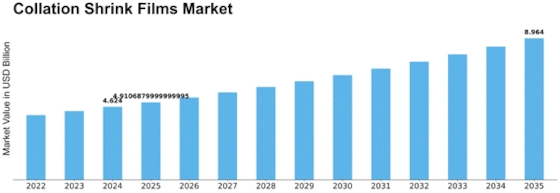

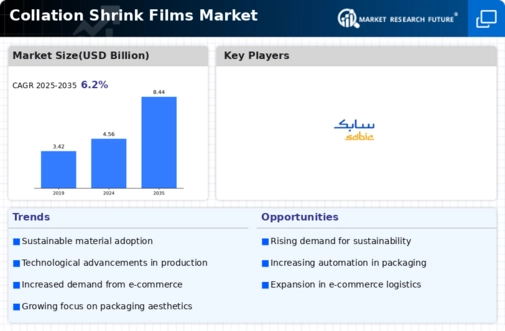
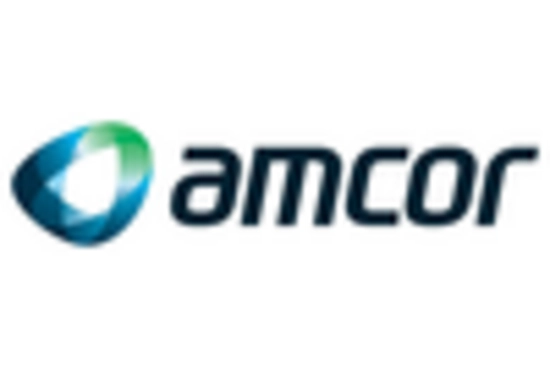
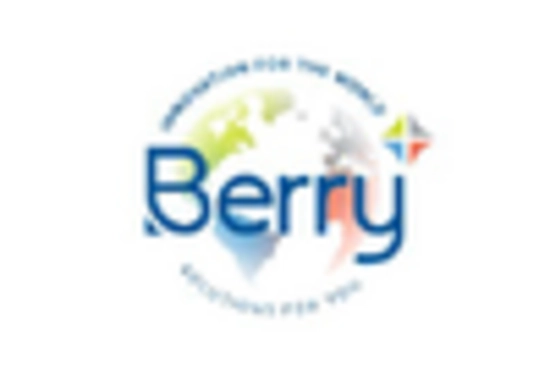
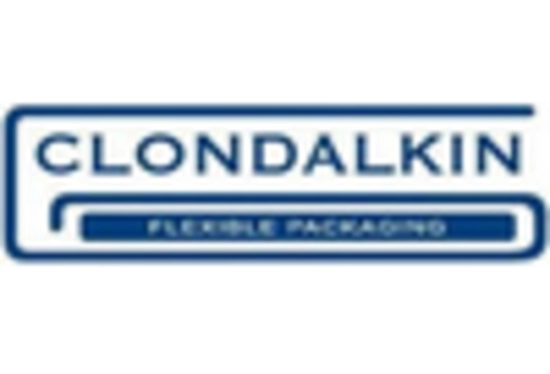
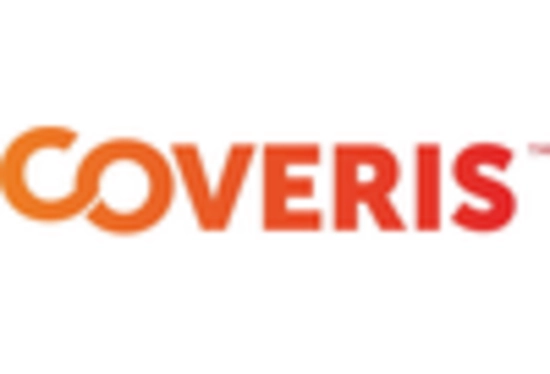
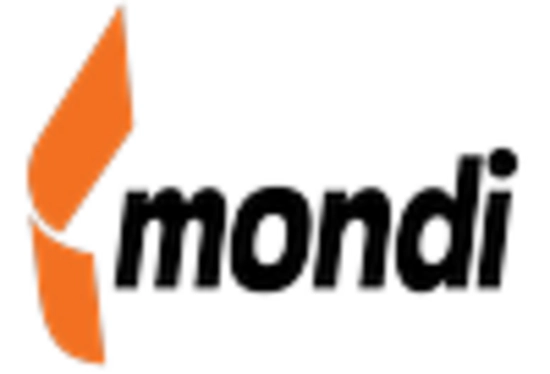
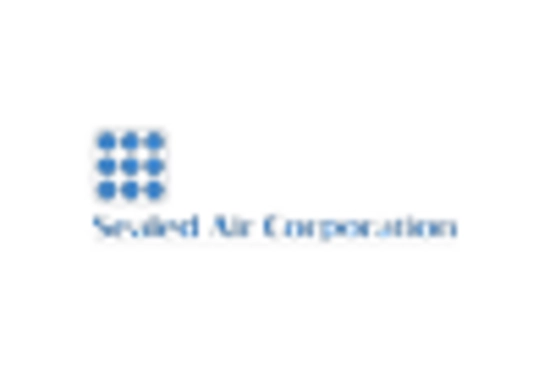

Leave a Comment